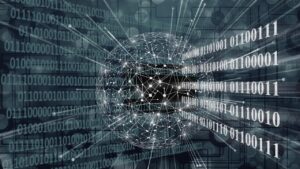Accept Cookies & Privacy Policy?
We use cookies to ensure that we give you the best experience on our website. If you continue to use this site we will assume that you accept and understand our Privacy Policy, and our Terms of Service.
Regression testing is a common software testing practice that fully ensures that an application functions as expected after any form of iteration like code changes, updates, or improvements.
Regression testing is solely responsible for the increased productivity, stability, and functionality of all existing application features. Whenever a modification is added to the code, regression is applied to warrant each update, ensuring the system stability stays sustainable under continuous development and improvements.
Changes in the code concur with dependencies, defects, or malfunctions. Regression solely targets to mitigate these underlying risks, assuring the previously developed and tested code remains fully operational even after any new change implementations and iterations.
Generally, an application scans through multiple tests before any change in integration to the main development branch. Regression is almost the final step, verifying the product behavior as a complete functioning unit.
Typically, regression testing is usually applied in these scenarios:
Test automation is an absolutely necessary element in all software development practices. Similarly, automated regression testing is also considered a critical kingpin.
With rapid regression processes deployed, product teams receive informative feedback and respond instantaneously. Regression testing detects novel bugs early in the deployment cycle ensuring businesses don’t invest in post production maintenance cost efforts to resolve any residual built-up defects. Sometimes a seemingly benign mild modification might cause a maelstrom domino effect on the product’s key footprints and hamper its functioning.
Hence, developers and testers must not leave any smallest alteration, even the macroscopic, out of their control scope.
Functional tests inspect behaviors of just the new features and capabilities, dismissing their prior compatibility with the pre-existing. Excluding regression testing protocols, proves more difficult and time-intensive when investigating the primal root cause and the overall architecture of the product.
In alternate words, if a product goes under frequent modifications, regression is undoubtedly the best filter assuring the quality of the product is significantly improved.
Regression testing practices vary largely among organizations. However, there are a few basic industry best practices:
Change detection ( in the source code)
Detecting modifications and optimizations in the source code; identifying the altered components or modules that were mapping their concurrent impacts on the existing features.
Prioritizing All Changes and Product Requirements
Prioritize modifications including product requirements to streamline the testing process with the documented test cases and tools.
Fixing Entry Points and Entry Criteria
Ensure the application meets all preset eligibility before initiating the regression test execution.
Prefix The Exit Point
Determine an exit or final point for the required eligibility or conditions.
Schedule & Perform Tests
Finally, post identifying the test components, schedule the appropriate time for regression testing.
Regression testing has primarily three predominant implementation and deployment methods, including the re-test all strategy, the regression test selection strategy, and the test case prioritization strategy.
Complete Regression
In this first technique, regression testing is thoroughly deployed applying to all existing test suites. It is the safest way to ensure all bugs are detected and resolved, even though this method is both time and resource intensive.
The complete regression approach fits better in certain contexts as It’s best when an application is readjusted for a new platform or language, or when the operating system gets a major update.
Regression Test Selection
Selecting the relevant sections that can be affected by changes and deploying regression testing on the selected parts only. Mapping out co-related areas can help apply limited and relevant test cases to significantly reduce both the time and effort invested in a regression execution.
Test Case Prioritization
Prioritize test cases to be included and tested first in the regression process. These test cases should be prioritized on these criteria: failure rates, business impacts, and end user POV including gradually used functionalities.
The test cases directly relating to customer-facing aspects and newly added functionalities are considered high priority as well.
Regression in Agile
Within the Agile development approach, teams proliferate additional benefits and values, such as an accelerated time-to-market, ROI, customer support, and product improvements. This comes with a significant challenge of perfectly balancing sprint development cycles and executing iterative testing avoiding conflicts as the product stabilizes and matures.
Successful Agile implementation of regression plays a key role in fully aligning the existing and updated functionalities, avoiding all possibilities of rework in the near future. Agile regression testing ensures all the basic business functions are stable and sustainable.
Alternatively, regression helps developers to focus all efforts on building new features/functionalities for the application and then keep on returning to cross-checking defects in the old features.
Successfully applying regression reveals the unexpected risks in all software builds, helping developers to respond and refix more quickly and efficiently.
Regression testing is the complete process of re-running a full or partial selection of previously executed test cases to verify that all features work as intended.
Requirement?
This service ensures any new code changes or iterations don’t negatively impact the functionality of already-existing software systems. Warranting that when the most recent code changes are made, the older code still functions as it was initially supposed to sans error.
Exceeding customers’ expectations for delivery and software quality, regression testing is one of the key components to gaining client trust. By including regression into the test cycle, organizations can automatically demonstrate their expert proficiency in the efficient delivery of software in its pristine functional state.
The Regression Testing Services- The Bug Hunt Process AT Thought Frameworks
We deploy an agile methodology, highlighting potential risks early on in the project development cycle.
The QA team is aware of the documented requirements and initiates designing test cases as part of each sprint. The test cases are prioritized as priorities 1, 2, and 3 depending on the business’s functional needs.
All requirements, UI/UX, functional, integration, end-to-end system test cases, and microservices are pre-included in the regression suite (based on product/ client requirements).
Along with each sprint’s release scope, test cases are adjusted or added as part of each further sprint.
Based on conversations with the product team and development team, the QA test lead clock sprint cycles for the complete regression suite to be executed.
Mostly automation is favored for the execution of regression suites. Still, occasionally, due to product complexity, all test cases cant be automated, necessitating the alternating use of both manual and automated testing.
Regression testing seeks a continuous testing process that prevents defects from leaking into production. Without continuous testing, the software’s overall quality and stability can possibly suffer in the long run.
Failure to perform software regression can potentially result in future excessive costs associated with unsorted production incidents.
The Right Time to Perform Regression Testing Service is when the product is almost nearly ready for release being reliable enough to run the full regression suite.
Software regression testing costs will continually rise if your program requires frequent modification. The manual execution of test cases lengthens delivery time frames and further raises expenses. In these situations, automating software regression test cases is the best decision. The amount of test cases that can be recycled for regression cycles determines the extent of automation deployment.
Another ancillary testing service you must opt for with Regression is Automation Testing (once product stability is fully achieved) is also advised as an additional component of regression.
Regression testing is key to improving the overall software product quality and its end user experience. The right regression testing tools can help identify all surfaced and underlying defects and nip them in the bud early on in the production pipeline.
In addition, regression testing in Agile offers a varied host of technical business advantages. Therefore, the investments in planning and performing regression ensure controlled budgets, process deployments, and early error mitigation of the software products.
Thought Frameworks is a U.S. based QA and software testing organization that’s been leading in business since 2009, armed with the ultimate solutions for all your software’s QA testing challenges. Having headquarters both in California, USA and a fully functional well equipped QA Test Lab in Bengaluru-India, that delivers premium QA and QC services endlessly across different Industry domains and niches. An ISTQB Silver Partnered Company, our superhuman test team heroes have delivered numerous successful QA and QC projects for clients across the globe. Get powered by our deep dive bug hunting process that helps your software in clocking release cycles on time while delivering excelling quality and functionality.

So picture this: You’re the air traffic controller of a chaotic airport where the planes (developers) don’t always listen, the passengers (stakeholders) want to change destinations mid-flight, and the weather (unforeseen blockers) is always unpredictable.

Imagine a world where testing is no longer a bottleneck. No more endless cycles of manual effort, no more missed defects due to human fatigue, and no more panic at the eleventh hour before a major ERP rollout.

Imagine a world where testing is no longer a bottleneck. No more endless cycles of manual effort, no more missed defects due to human fatigue, and no more panic at the eleventh hour before a major ERP rollout.

Let’s talk about GenAI and testing in 2025—the wild west of technology where machines are not just smart, but scary smart. GenAI (that’s Generative AI for the uninitiated) is running the show everywhere. It’s writing poetry, designing ads, debugging code, and probably plotting to take over my job as I write this blog.

Ah, 2024—you’ve been a year, haven’t you? For us at Thought Frameworks, this year wasn’t just about running the usual QA/QE playbook. Nope, we went full throttle into the future—tinkering, testing, and transforming everything from ERP systems to the ever-evolving world of SAP, GenAI, and security testing.

So, you’re deep in the ERP trenches and trying to figure out the best approach between NetSuite and Oracle EBS. You’re certainly not alone! We can help break down how these two ERP giants stack up when it comes to ensuring systems run like clockwork but without the overload.
Accept Cookies & Privacy Policy?
We use cookies to ensure that we give you the best experience on our website. If you continue to use this site we will assume that you accept and understand our Privacy Policy, and our Terms of Service.
| Cookie | Duration | Description |
|---|---|---|
| cookielawinfo-checkbox-analytics | 11 months | This cookie is set by GDPR Cookie Consent plugin. The cookie is used to store the user consent for the cookies in the category "Analytics". |
| cookielawinfo-checkbox-functional | 11 months | The cookie is set by GDPR cookie consent to record the user consent for the cookies in the category "Functional". |
| cookielawinfo-checkbox-necessary | 11 months | This cookie is set by GDPR Cookie Consent plugin. The cookies is used to store the user consent for the cookies in the category "Necessary". |
| cookielawinfo-checkbox-others | 11 months | This cookie is set by GDPR Cookie Consent plugin. The cookie is used to store the user consent for the cookies in the category "Other. |
| cookielawinfo-checkbox-performance | 11 months | This cookie is set by GDPR Cookie Consent plugin. The cookie is used to store the user consent for the cookies in the category "Performance". |
| viewed_cookie_policy | 11 months | The cookie is set by the GDPR Cookie Consent plugin and is used to store whether or not user has consented to the use of cookies. It does not store any personal data. |
Ready for a Quality Software?
Let’s Dig Deep Into Your Thought!